In the hustle and bustle of our daily lives, finding time to unwind and prepare for a restful night’s sleep can be a challenge. However, incorporating a simple yet effective habit into your bedtime routine—stretching—can make a significant difference in the quality of your sleep. We’ll explore the various reasons why stretching before bed is crucial for your overall well-being and how it can contribute to a peaceful night’s sleep.
What is stretching?
Stretching is a form of physical exercise where specific muscles or muscle groups are deliberately elongated or stretched to improve flexibility, increase the range of motion, and enhance overall muscle function. The primary goal of stretching is to maintain or improve the elasticity of muscles and tendons, which can contribute to improved athletic performance, reduced risk of injury, and increased joint mobility.
There are two main types of stretching:
- Static stretching: This involves holding a stretch in a comfortable position for a prolonged period, typically 15-60 seconds. Static stretching helps improve flexibility by elongating the muscles and increasing their length. It is commonly used in cool-down routines after exercise.
- Dynamic stretching: Dynamic stretching involves moving parts of your body through a full range of motion to warm up muscles and increase flexibility. These stretches are usually performed before physical activities or workouts to prepare the body for movement. Unlike static stretching, dynamic stretching is more active and involves controlled movements.
It’s important to note that stretching should be done in a controlled and gradual manner, avoiding bouncing or forcing the body into uncomfortable positions. It is advisable to warm up before stretching, and individuals with specific health conditions or injuries should consult with a healthcare professional or fitness expert before starting a stretching routine.
Relieving tension and stress
One of the primary benefits of stretching before bed is its ability to release tension accumulated throughout the day.
As we go about our daily activities, our muscles tighten and stress accumulates. Gentle stretching helps to alleviate this tension, promoting relaxation and signaling to the body that it’s time to unwind.
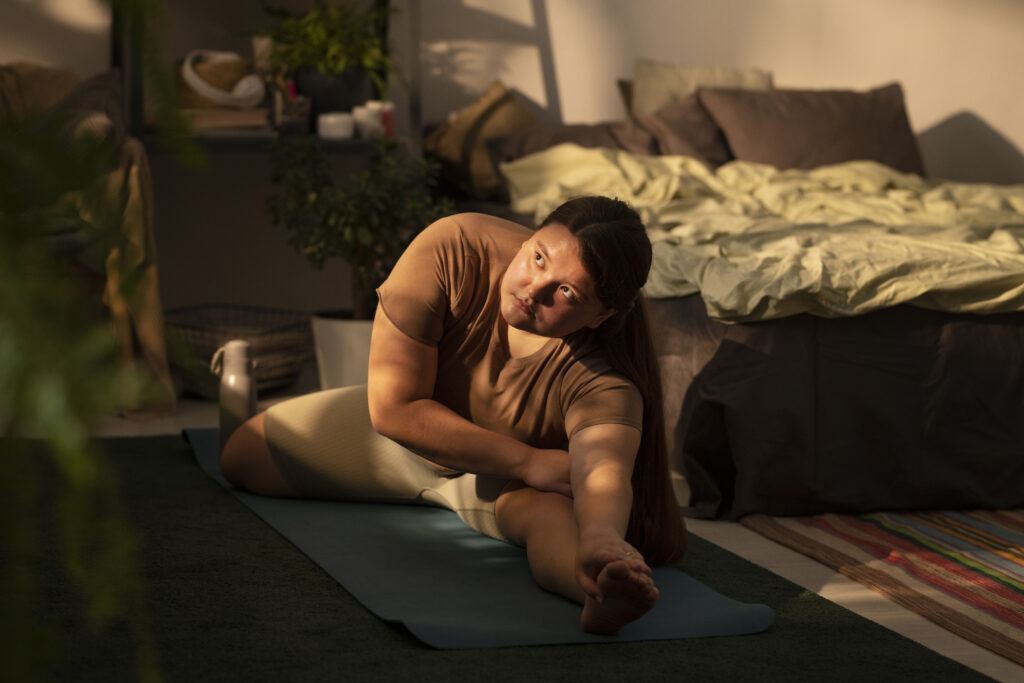
Improving flexibility
Regular stretching contributes to improved flexibility, which is essential for maintaining joint health and preventing stiffness. As we age, flexibility tends to decline, making it harder to move comfortably. Incorporating stretching into your nightly routine can counteract this natural process, allowing you to wake up feeling more limber and agile.
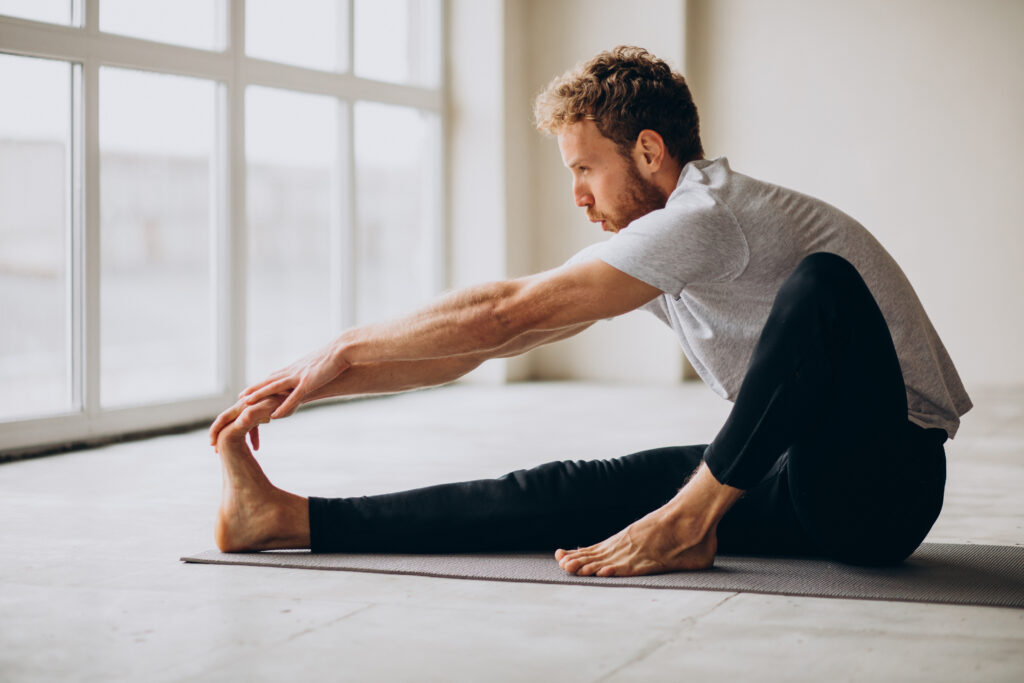
Enhancing circulation
Stretching promotes better blood circulation by increasing the flow of oxygen to the muscles. This improved circulation not only aids in muscle recovery but also contributes to overall cardiovascular health. Better blood flow can also help regulate body temperature, which is crucial for achieving and maintaining a comfortable sleep environment.
Reducing the risk of sleep-disrupting conditions
Certain conditions, such as restless leg syndrome and muscle cramps, can disrupt sleep. Stretching before bed may help prevent these issues by promoting muscle relaxation and preventing involuntary contractions. By incorporating stretching into your bedtime routine, you may reduce the likelihood of experiencing these sleep-disrupting conditions.
Calming the mind
In addition to its physical benefits, stretching also has a positive impact on mental well-being. Engaging in gentle stretches before bed can help calm the mind, reduce anxiety, and promote a sense of tranquility. This mental relaxation is conducive to falling asleep faster and enjoying a more restorative sleep.
Transform your TV into your personal gym!

Muscle recovery
If you engage in regular physical activity or have a sedentary job, your muscles may become tight and fatigued. Stretching before bed aids in muscle recovery by increasing blood flow to the muscles and promoting flexibility. This can reduce the risk of injury and contribute to better overall physical health.
Improved posture
Sedentary lifestyles and long hours spent sitting at a desk can lead to poor posture. Evening stretching can target areas of the body that are often affected by prolonged sitting, such as the neck, shoulders, and lower back. By addressing these areas, you can gradually improve your posture over time.
Top 5 bedtime stretches for ultimate relaxation
Neck and shoulder release
Start by sitting or standing comfortably. Slowly tilt your head to one side, bringing your ear toward your shoulder until you feel a gentle stretch along the side of your neck. Hold for 15-30 seconds and repeat on the other side. For an added shoulder stretch, gently pull your head forward with your hand while keeping your shoulders relaxed. This stretch helps alleviate tension built up from staring at screens and poor posture.
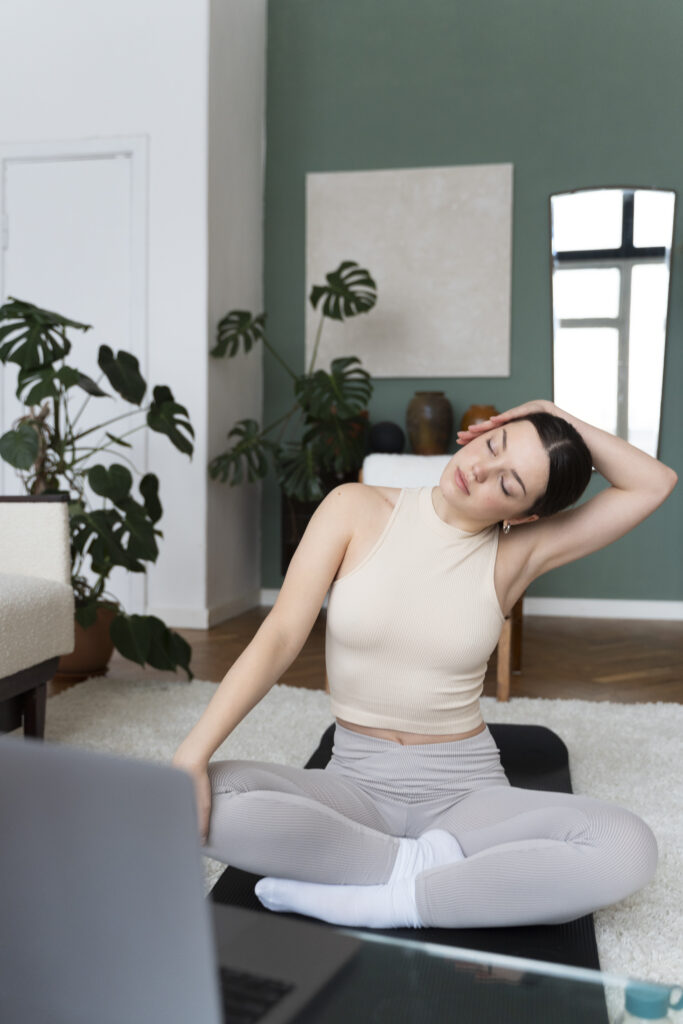
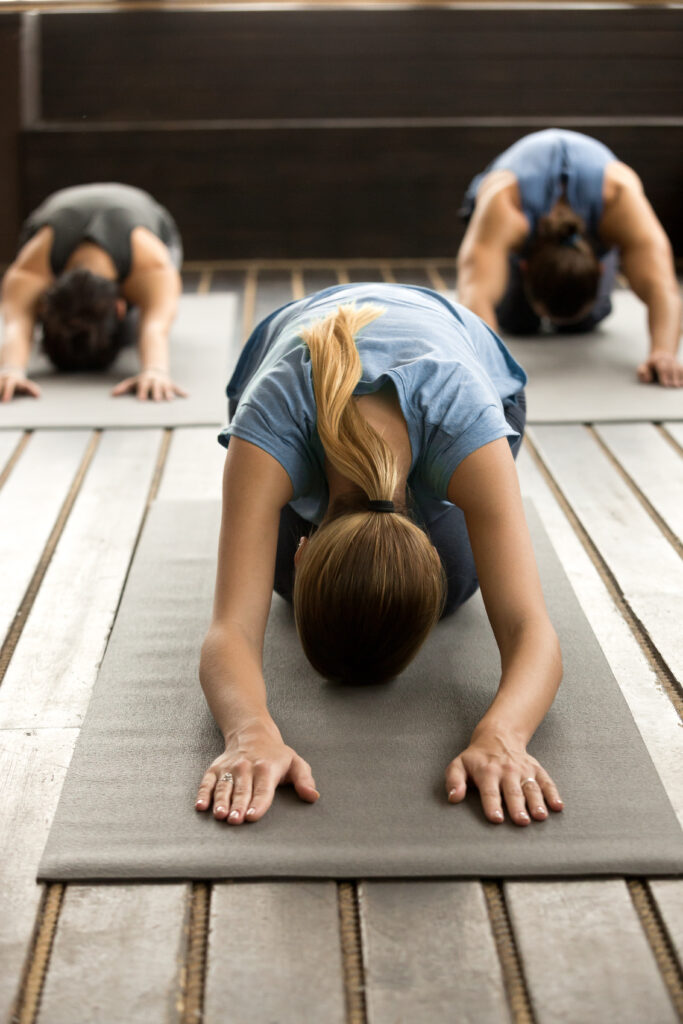
Child’s pose
Get on all fours with your hands shoulder-width apart and knees hip-width apart. Sit back on your heels, extending your arms forward on the floor. Feel the stretch along your spine and through your hips. Hold for 30 seconds to a minute, focusing on deep and steady breathing. Child’s pose is an excellent way to relax the back and promote a sense of calmness.
Seated forward bend
Sit on the edge of your bed with your legs extended in front of you. Hinge at your hips and reach forward toward your toes. Keep your back straight and avoid rounding your spine. Hold the stretch for 20-30 seconds, feeling the gentle stretch along your hamstrings and lower back. This stretch helps release tension in the back and prepares your body for a night of rejuvenating sleep.
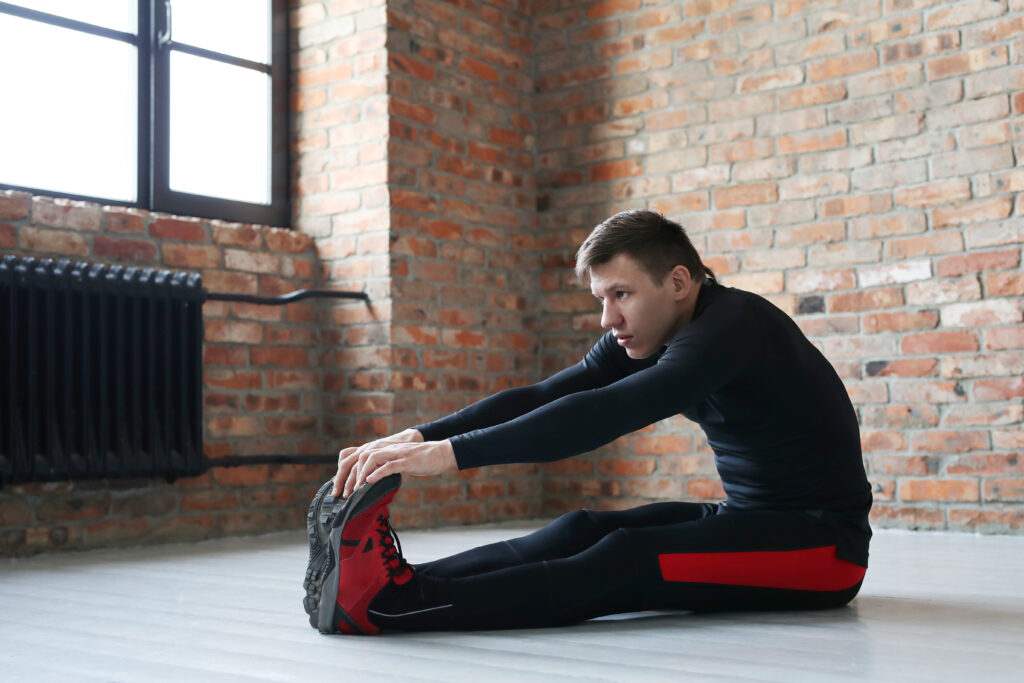
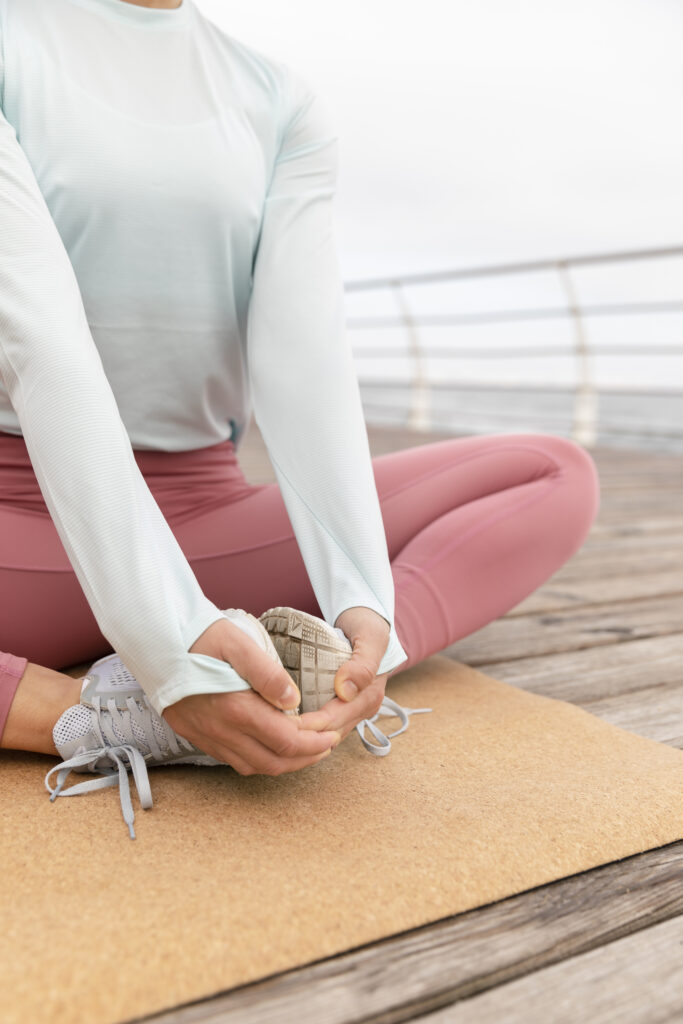
Butterfly stretch
Sit with your back against the headboard of your bed and bring the soles of your feet together, allowing your knees to fall outward. Hold your feet with your hands and gently press your knees toward the mattress. This stretch targets the inner thighs and groin, promoting relaxation in the lower body. Hold for 30 seconds to a minute while taking slow, deep breaths.
Legs up the wall
Lie on your back and scoot your hips close to the edge of the bed. Extend your legs up the wall, allowing your heels to rest against it. Keep your arms by your sides or place your hands on your belly. This gentle inversion helps improve circulation and relieves tension in the lower back and legs. Close your eyes, focus on your breath, and hold the pose for 5-10 minutes for maximum relaxation.
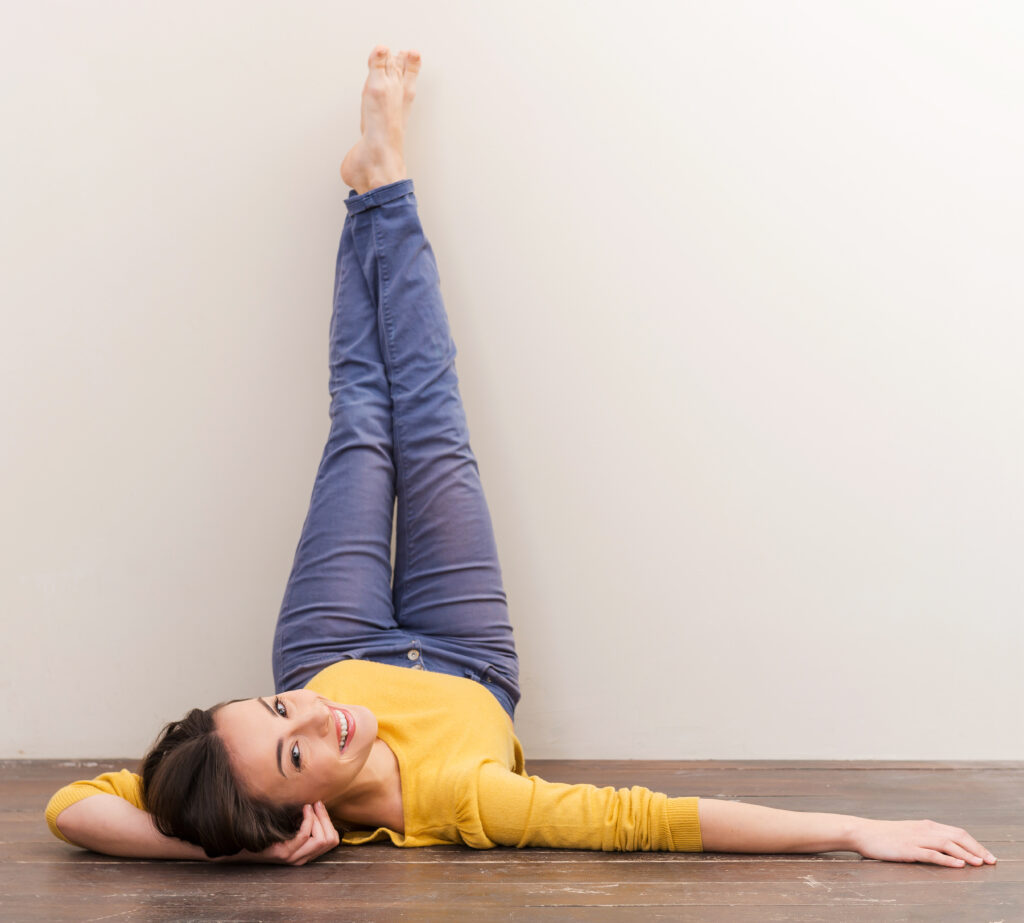
Incorporating these stretches into your nightly routine is a small investment with significant returns. As you dedicate a few minutes to stretch and unwind, you’re not just preparing for sleep; you’re nurturing your body and mind. So, embrace the power of bedtime stretching, and let the serenity of these moments guide you into a world of sweet dreams and undisturbed rest.
Workout at home with Fit at Home!
Welcome to Fit at Home, your ultimate fitness partner for effective and enjoyable home workouts with no equipments! With our comprehensive range of workouts for the whole family and expert guidance, you can achieve your fitness goals right from the comfort of your own home.
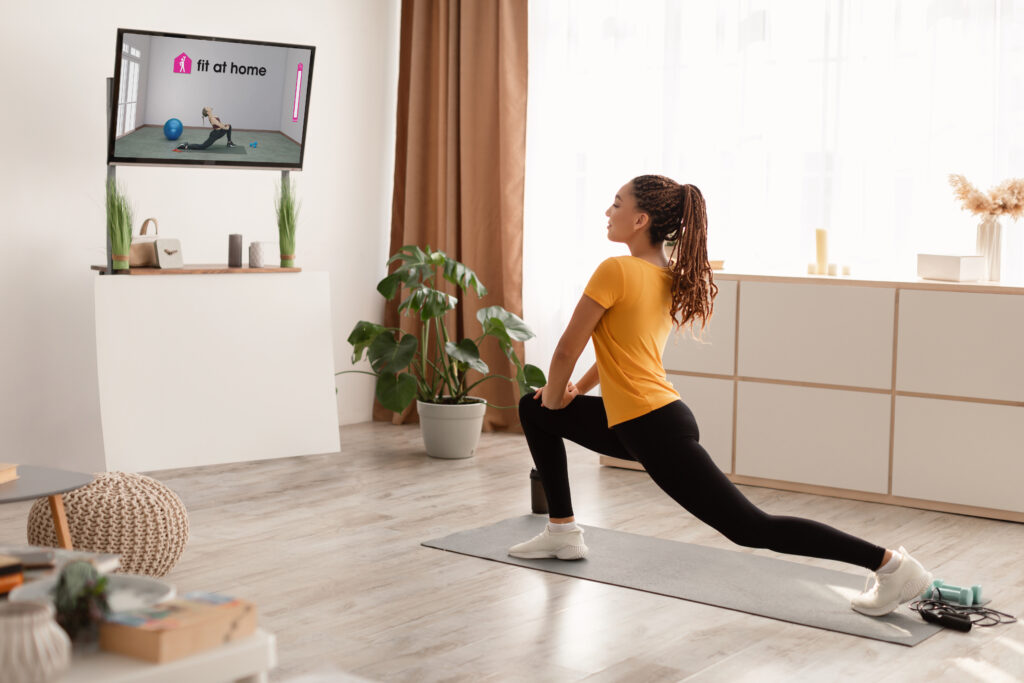
We love to make you move!
✓ Work out in front of your tv whenever you want.
✓ 24/7 on-demand with more than 500 workouts.
✓ For the whole family.
Fit at Home is your NUMBER ONE fitness app for the whole family. Whether you want to lose weight, relax with our meditation videos, let your kids exercise more often etc. Our professional trainers will help you become the fittest, healthiest and happiest version of yourself and your family!
Stretching in the morning
There’s something magical about the quiet moments of early morning, and incorporating a simple yet effective practice like stretching can make those moments even more powerful. In this blog post, we’ll explore the numerous benefits of morning stretching, not only for your physical health but also for setting a positive tone for the rest of your day.
- Wake up your muscles: As you sleep, your muscles can become stiff and tight. Morning stretching helps wake up your body, promoting improved flexibility and range of motion. Gentle stretches target different muscle groups, enhancing circulation and delivering a rush of oxygen to your tissues, leaving you feeling more agile and ready to tackle the day.
- Boost your energy levels: A morning stretch routine is a natural energy booster. Engaging in dynamic stretches or yoga poses stimulates the nervous system, increasing blood flow and oxygen to your brain. This can help shake off morning grogginess, leaving you feeling more alert and focused as you embark on your daily tasks.
- Enhance posture and alignment: Sitting or lying in the same position for hours during sleep can lead to stiffness and poor posture. Morning stretches encourage proper alignment, improving your posture throughout the day. By maintaining good posture, you not only prevent discomfort but also project confidence and vitality.
- Stress relief and mental clarity: Morning stretching is not only a physical exercise but also a mindful practice. Incorporating deep breathing and mindfulness into your routine can help alleviate stress and promote mental clarity. Take a few moments to focus on your breath during each stretch, creating a sense of calm that can carry you through the challenges of the day.
- Improved circulation: Stretching gets your heart pumping and enhances blood circulation, delivering vital nutrients and oxygen to your muscles and organs. Improved circulation not only supports overall health but also contributes to a vibrant complexion and a sense of overall well-being.
- Set a positive tone for the day: Starting your day with intentional movement and self-care sets a positive tone that can influence your mindset throughout the day. By prioritizing your well-being in the morning, you cultivate a sense of self-love and set the stage for making healthier choices in other aspects of your life.
- Adaptability and consistency: Morning stretching is a flexible practice that can be adapted to suit your preferences and time constraints. Whether it’s a quick five-minute routine or a more extended session, consistency is key. Making morning stretching a regular part of your routine allows you to enjoy cumulative benefits over time.
Incorporating morning stretching into your daily routine is a small investment with significant returns. It’s a simple yet powerful practice that can positively impact your physical and mental well-being. Embrace the quiet moments of the morning, take a few minutes for yourself, and let the rejuvenating power of stretching set the stage for a healthier, more energized you.